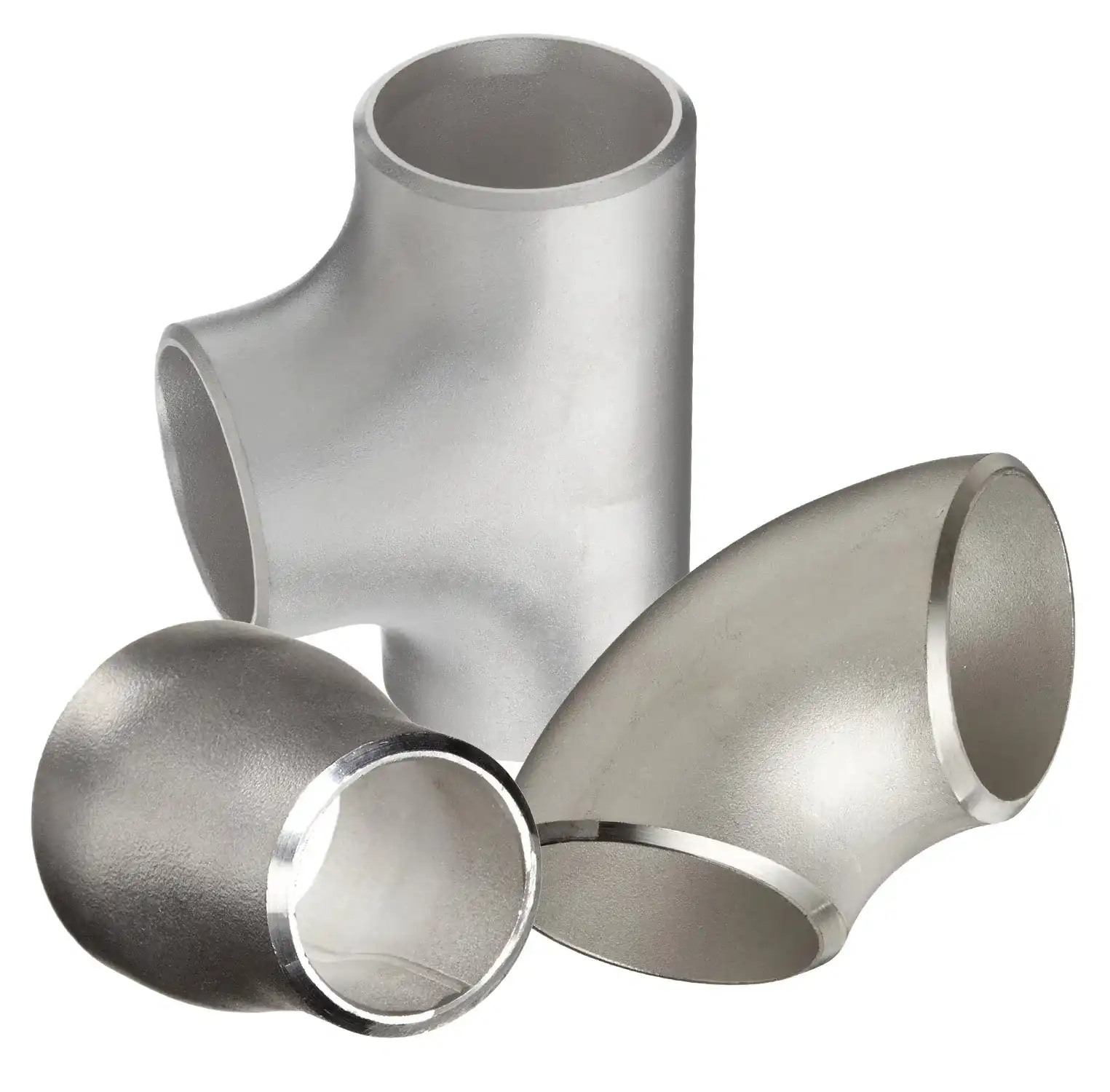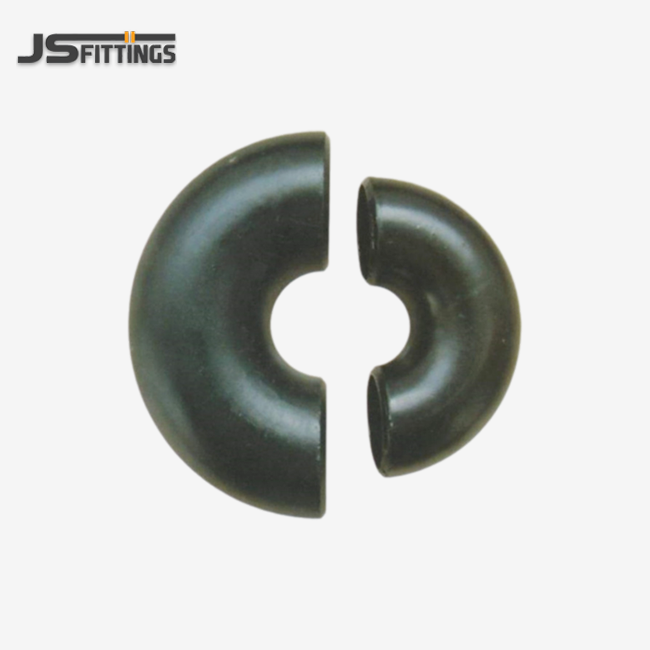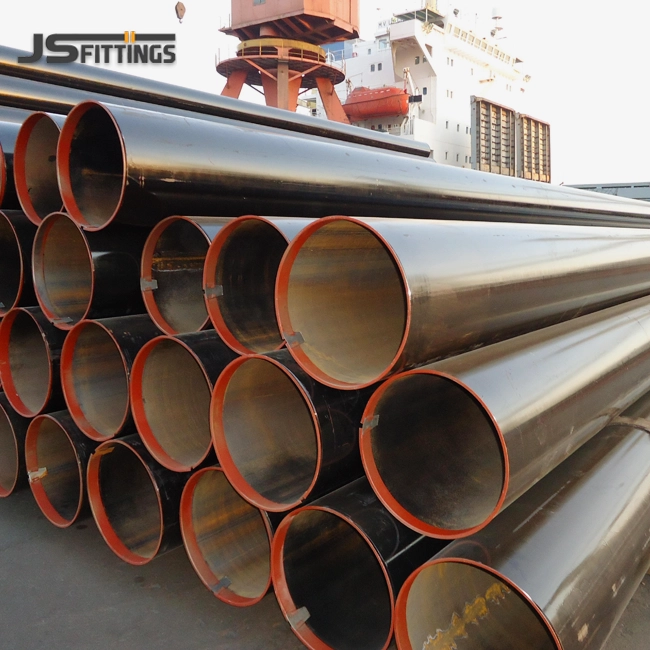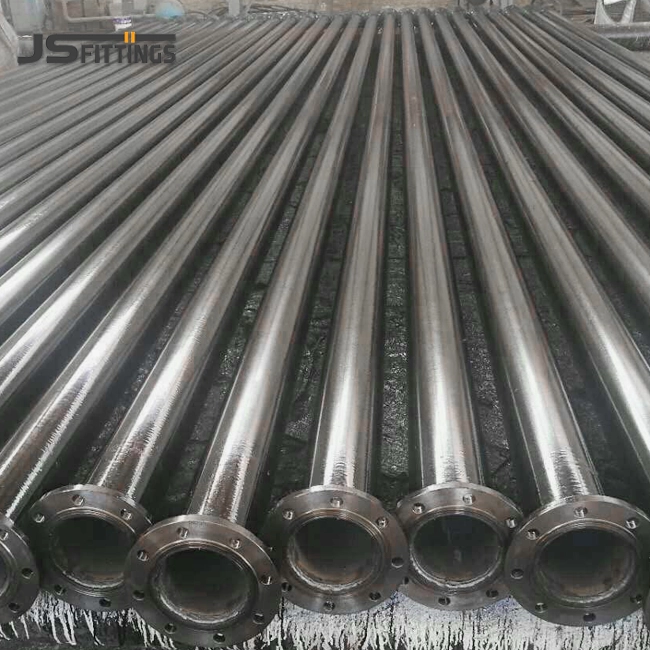When selecting pipe fittings for industrial piping systems, understanding the fundamental differences between buttweld fittings and socket weld fittings becomes crucial for project success. Buttweld fittings connect pipes through circumferential welding at the fitting ends, creating seamless joints ideal for high-pressure applications. Socket weld fittings, conversely, insert pipe ends into recessed sockets before welding, providing excellent strength for smaller diameter systems. The choice between these welding methods significantly impacts project costs, installation time, system performance, and long-term reliability across various industrial applications.

Understanding Buttweld Fitting Construction and Applications
Buttweld fittings represent the gold standard in high-pressure piping systems, featuring seamless connections that eliminate potential leak paths. These pipe fittings utilize beveled ends that align perfectly with pipe bevels, creating continuous wall thickness throughout the joint. The welding process involves complete penetration welding around the entire circumference, ensuring maximum strength and integrity.
Manufacturing standards such as ASME B16.9 govern buttweld fitting dimensions and tolerances. These fittings accommodate pipes from 1/2 inch to 60 inches in diameter, spanning Schedule 10 through Schedule XXS wall thicknesses. Common configurations include elbows (45° and 90°), tees, reducers, end caps, and stub ends, all designed for seamless integration into industrial piping networks.
If you need maximum pressure resistance and smooth internal flow characteristics, then buttweld fittings prove more suitable than socket weld alternatives. The continuous bore design eliminates turbulence-causing restrictions, making these fittings ideal for critical process applications where pressure drop minimization matters.
Socket Weld Fitting Design and Performance Characteristics
Socket weld fittings feature recessed sockets that accept pipe ends, creating robust mechanical connections through fillet welding around the fitting exterior. ASME B16.11 establishes dimensional standards for these fittings, typically covering sizes from 1/8 inch through 4 inches in diameter. The socket depth provides precise pipe positioning while the small gap between pipe end and socket bottom prevents stress concentration during thermal cycling.
These pipe joints excel in smaller diameter applications where full penetration welding becomes challenging or cost-prohibitive. Socket weld elbows, tees, couplings, and other configurations offer excellent strength-to-weight ratios while simplifying field installation procedures. The socket design inherently reinforces the connection point, distributing stresses across a larger area than threaded alternatives.
If you need reliable connections for instrument lines, utility systems, or secondary piping, then socket weld fittings provide optimal balance between performance and installation efficiency. The forged construction typical in these fittings delivers superior strength compared to cast alternatives while maintaining dimensional consistency.
Critical Performance Differences: Pressure Ratings and Flow Characteristics
Pressure handling capabilities reveal significant performance gaps between these welding methods. Buttweld fittings achieve pressure ratings matching connected piping, often exceeding 10,000 PSI in high-grade alloy systems. Test data from ASME standards shows buttweld joints maintain 100% of pipe strength when properly welded, with failure occurring in the pipe rather than the fitting connection.
Socket weld fittings typically handle pressures up to 6,000 PSI in standard carbon steel configurations, with ratings varying based on size, material, and temperature. The socket configuration creates a stress concentration at the weld toe, limiting ultimate pressure capacity compared to full penetration alternatives.
Flow characteristics differ substantially between these connection types. Buttweld fittings maintain constant internal diameter throughout the joint, minimizing pressure losses and turbulence. Socket weld connections create slight internal steps where pipe ends meet socket walls, potentially causing minor flow disturbances in sensitive applications.
Comparative testing indicates buttweld systems achieve 2-5% lower pressure drops compared to socket weld equivalents in identical piping configurations. This performance advantage becomes critical in long pipeline runs or systems requiring precise flow control.
Installation Complexity and Cost Analysis
Installation requirements significantly impact total project costs and timeline considerations. Buttweld fitting installation demands skilled welders capable of producing full penetration welds meeting ASME Section IX qualifications. The welding process requires complete joint preparation, including beveling, alignment, and often multiple welding passes for heavier wall thicknesses.
Socket weld installation proves considerably simpler, requiring only fillet welding around the fitting exterior. This welding method reduces skill requirements and installation time while eliminating the need for internal backing or complex joint preparation. Field crews can typically complete socket weld connections 40-60% faster than equivalent buttweld joints.
Material costs favor socket weld fittings in smaller sizes, where the forged construction costs less than seamless buttweld alternatives. However, this cost advantage diminishes in larger sizes where buttweld fittings become more economical. Installation labor costs generally favor socket weld systems due to reduced welding time and lower skill requirements.
If you need to control project budgets while maintaining adequate performance, then socket weld fittings offer compelling advantages in small-bore applications. Conversely, critical process lines justify the additional costs associated with buttweld systems through enhanced reliability and performance.
Material Options and Compatibility Considerations
Both fitting types accommodate extensive material ranges, from carbon steel and stainless steel to exotic alloys like Inconel and Hastelloy. Seamless buttweld fittings typically offer broader alloy availability, particularly in larger sizes where forging becomes impractical. Socket weld fittings excel in forged materials, providing superior grain structure and mechanical properties compared to cast alternatives.
Stainless steel grades 304, 316, and duplex variants remain popular choices for both fitting types, offering excellent corrosion resistance and weldability. Carbon steel options span ASTM A234 WPB for buttweld fittings and ASTM A105 for socket weld variants, providing reliable performance in standard industrial applications.
Alloy compatibility considerations become crucial when matching fitting materials to pipe specifications. Buttweld fittings must maintain similar thermal expansion characteristics to prevent stress concentration during temperature cycling. Socket weld fittings offer greater tolerance for minor material mismatches due to their mechanical connection design.
If you need exotic alloy compatibility or large diameter capabilities, then buttweld fittings provide superior material availability and manufacturing flexibility. Socket weld options excel when forged material properties offer advantages over seamless alternatives.
Quality Control and Testing Requirements
Non-destructive testing requirements differ significantly between these connection types, impacting quality assurance costs and project schedules. Buttweld joints typically require radiographic testing, ultrasonic examination, or both, depending on service criticality and code requirements. These testing methods verify complete penetration and detect internal discontinuities that could compromise joint integrity.
Socket weld connections generally require only visual inspection and occasional magnetic particle testing of the external fillet weld. The simplified testing requirements reduce inspection costs while accelerating construction schedules. However, the inability to inspect the internal connection limits defect detection capabilities compared to radiographic methods.
Leak testing becomes critical for both connection types, with hydrostatic testing representing the final verification of system integrity. Industry data shows properly installed buttweld systems achieve leak rates below 1 x 10^-9 cc/sec, while socket weld systems typically perform at 1 x 10^-8 cc/sec under identical test conditions.
If you need comprehensive quality verification and maximum leak-tight integrity, then buttweld systems provide superior testing capabilities and performance verification. Socket weld alternatives offer adequate quality control for less critical applications while reducing inspection costs and complexity.
JS FITTINGS Buttweld Fittings Advantages
JS FITTINGS delivers exceptional buttweld fitting solutions backed by four decades of manufacturing expertise and continuous process improvement. Our advanced production capabilities ensure consistent quality while meeting the most demanding industrial requirements across global markets.
- Precision Manufacturing: Four state-of-the-art production lines utilize advanced forming and machining technologies to maintain tight dimensional tolerances, ensuring perfect fit-up and reliable welding performance in critical applications.
- Comprehensive Certifications: ISO 9001, CE, and GOST-R certifications demonstrate our commitment to quality management systems and international compliance standards, providing confidence for global project requirements.
- Material Excellence: Premium grade materials sourced from certified suppliers undergo rigorous testing protocols, including chemical analysis, mechanical testing, and non-destructive examination before fabrication.
- Wide Size Range: Complete inventory spanning 1/2 inch through 60 inches accommodates diverse project requirements, from small-bore connections to large-diameter transmission systems.
- Advanced Testing: In-house testing laboratory performs hydrostatic testing, dimensional verification, and material certification, ensuring each fitting meets or exceeds specification requirements.
- Global Supply Chain: Established distribution networks across Middle East, South America, Europe, and Asia provide reliable delivery schedules and local technical support for international projects.
- Custom Solutions: Engineering capabilities support custom fitting development for specialized applications, including non-standard dimensions, exotic materials, and unique configuration requirements.
- Competitive Pricing: Efficient manufacturing processes and strategic material sourcing deliver cost-effective solutions without compromising quality or performance standards.
- Technical Support: Experienced engineering team provides application guidance, installation recommendations, and troubleshooting assistance throughout project lifecycles.
- Rapid Response: Streamlined production scheduling and inventory management ensure quick turnaround times for urgent project requirements and emergency replacements.
- Quality Assurance: Comprehensive quality control procedures include incoming material inspection, in-process monitoring, and final product verification before shipment.
- Environmental Compliance: Manufacturing processes incorporate environmental management systems and waste reduction initiatives, supporting sustainable industrial development goals.
Application-Specific Selection Guidelines
Critical process systems in refineries, chemical plants, and power generation facilities typically mandate buttweld fittings due to their superior pressure ratings and leak-tight characteristics. These applications prioritize long-term reliability over initial cost considerations, making the investment in full penetration welding economically justified through reduced maintenance and enhanced safety.
Utility systems, instrument air lines, and secondary piping networks often utilize socket weld fittings to balance performance requirements with installation efficiency. The reduced welding time and skill requirements make socket weld systems attractive for large-scale construction projects where labor costs significantly impact overall economics.
High-temperature applications exceeding 800°F generally favor buttweld connections due to their superior thermal stress distribution and expansion accommodation. The continuous wall thickness prevents stress concentration that could lead to thermal fatigue in socket weld alternatives.
If you need connections for critical process lines or high-pressure systems, then buttweld fittings provide optimal long-term performance and reliability. Socket weld alternatives excel in cost-sensitive applications where moderate pressure and temperature conditions prevail.
Maintenance and Lifecycle Considerations
Long-term maintenance requirements significantly impact total cost of ownership calculations. Buttweld systems typically require minimal maintenance due to their seamless construction and superior corrosion resistance. The absence of crevices or stress concentrations reduces the likelihood of localized corrosion or fatigue failures.
Socket weld connections may require periodic inspection of the external fillet weld, particularly in corrosive environments where crevice corrosion could develop at the pipe-to-socket interface. However, the mechanical nature of the connection often allows for easier repair or replacement compared to buttweld alternatives.
System modifications and expansions favor buttweld connections due to their ability to accommodate full radiographic inspection and code compliance verification. Socket weld systems offer advantages when frequent modifications or temporary connections are anticipated.
If you need minimal maintenance requirements and maximum service life, then buttweld systems provide superior lifecycle performance. Socket weld alternatives offer benefits when system flexibility and modification capabilities are prioritized over ultimate longevity.
Conclusion
The choice between buttweld fittings and socket weld fittings depends on specific application requirements, budget constraints, and performance priorities. Buttweld fittings excel in high-pressure, critical service applications where maximum reliability and flow efficiency are paramount. Socket weld fittings provide cost-effective solutions for smaller diameter systems where installation efficiency and moderate performance requirements prevail. Understanding these key differences enables informed decisions that optimize project outcomes while meeting safety, compliance, and economic objectives. Careful consideration of pressure ratings, installation complexity, material options, and lifecycle costs ensures the selected fitting type aligns with project goals and operational requirements.
Partner with JS FITTINGS for Superior Buttweld Fitting Solutions
Selecting the right pipe fitting manufacturer directly impacts project success and long-term system performance. JS FITTINGS combines four decades of manufacturing expertise with advanced production capabilities to deliver buttweld fittings that exceed industry standards and customer expectations.
Our comprehensive product range covers all major industrial applications, from standard carbon steel configurations to exotic alloy solutions for specialized processes. The combination of ISO 9001 quality management, advanced testing capabilities, and global supply chain support ensures reliable delivery and consistent performance for projects worldwide.
As a trusted buttweld fittings supplier, we understand the critical importance of meeting project deadlines while maintaining strict quality standards. Our streamlined production processes and inventory management systems support rapid response to urgent requirements without compromising product integrity or dimensional accuracy.
Experience the difference that quality manufacturing and dedicated customer support make in your next piping project. Our technical team stands ready to provide application guidance, material recommendations, and custom solutions tailored to your specific requirements. Discover why leading EPC contractors, distributors, and industrial end users choose JS FITTINGS for their most critical applications - contact us at admin@jsfittings.com to discuss your buttweld fitting needs and receive detailed technical specifications.
References
1. American Society of Mechanical Engineers. "ASME B16.9 - Factory-Made Wrought Buttwelding Fittings." New York: ASME Press, 2018.
2. American Society of Mechanical Engineers. "ASME B16.11 - Forged Fittings, Socket-Welding and Threaded." New York: ASME Press, 2016.
3. Mohitpour, M., Golshan, H., and Murray, A. "Pipeline Design & Construction: A Practical Approach, Third Edition." New York: ASME Press, 2007.
4. Nayyar, Mohinder L. "Piping Handbook, Seventh Edition." New York: McGraw-Hill Professional, 2000.
5. American Welding Society. "AWS D10.12/D10.12M - Guide for Welding Mild Steel Pipe." Miami: AWS Publications, 2018.
6. Escoe, A. Keith. "Piping and Pipeline Assessment Guide." Oxford: Gulf Professional Publishing, 2006.


_1758005569089.webp)
